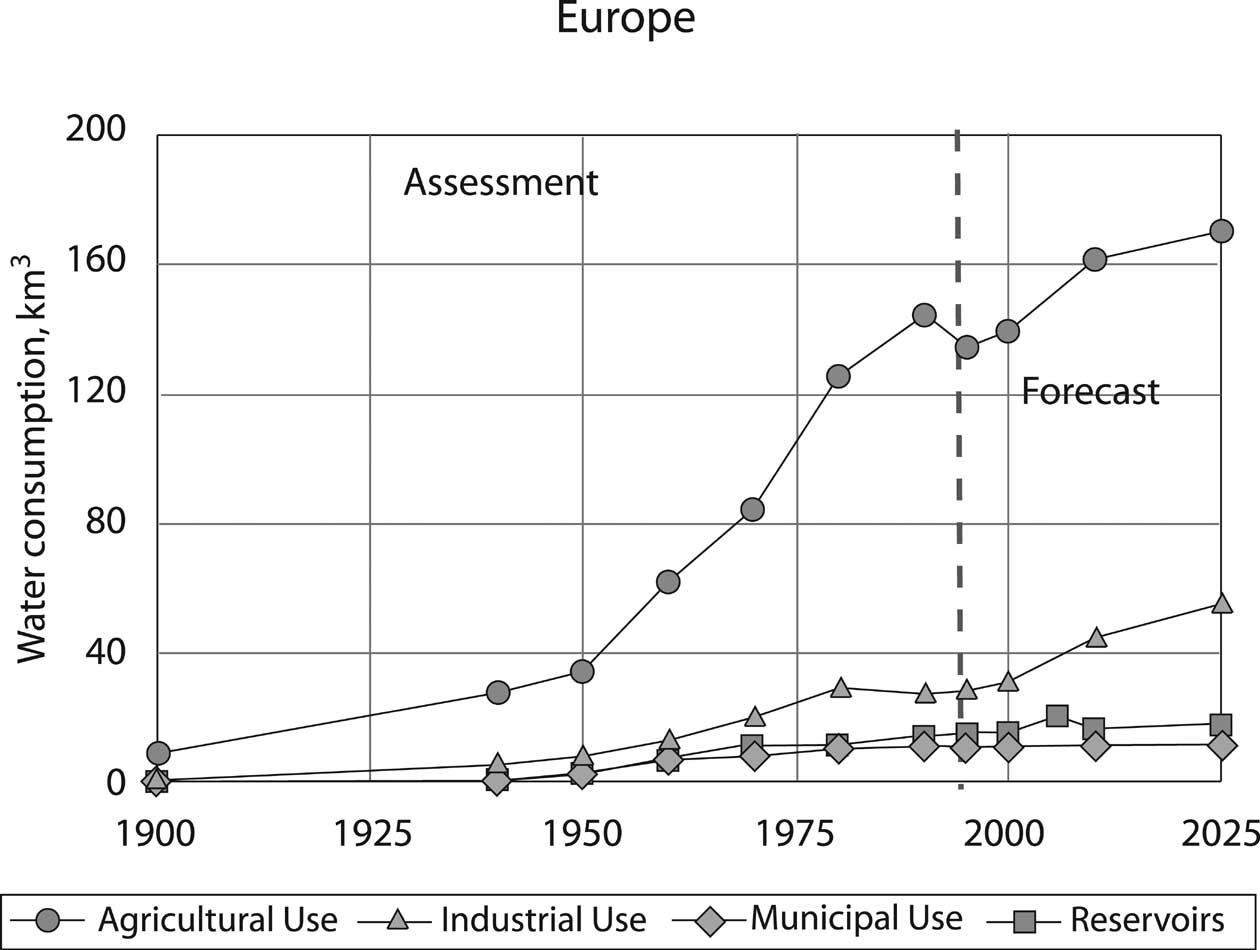
| Previous | Return to table of contents | Search Reports | Next |
| « Back to weltagrarbericht.de | ||
Looking into the Future for Knowledge, Science and Technology and AKST | 183

Figure 5-1. Dynamics of water consumption in North America by type of economic activities from 1900 to 2025. Source: Shiklomanov, 1999
ter use, per unit, would increase substantially through the ability to target and tailor the application of water coupled with an improvement in crop strains. The greatest impact could be felt in the area of biotechnology, with the possibility of engineering more water-efficient cultures, and ICT, which would bring about more effective water use in agriculture. Improvements could also come from a greater acknowledgement of the need to better manage the role of "virtual water" (water used to produce products) and changes in crop production (in developing countries) and import patterns (in developed countries). Forestry |
|
directly or indirectly employed in forestry and forest-based industries, mainly in rural areas. Europe produces 28% of the world's paper supply and is a major operator in wood-based panels and engineered wood products; the contribution of the forest sector accounts for 8% of Europe's added value (i.e., 600 billions euros). With five percent only of the world forest area, Europe produces 25-30% of the world production of forest-based products. The forestry sector's main asset is based on the renewable natural resources and the use, to a large extent, of environmentally-friendly processes. Forest-based industries are very efficient in recovering, reusing and recycling their materials and products, for the manufacturing of new products as well as for energy production. Rigorous life cycle assessments of forest products have shown that they have a strong comparative advantage vis-à-vis other materials. More utilization of forest biomass as a source for energy will be of high importance for a more environmentally-friendly energy secure, sustainable Europe. Fisheries and aquaculture |
| Previous | Return to table of contents | Search Reports | Next |
| « Back to weltagrarbericht.de | ||